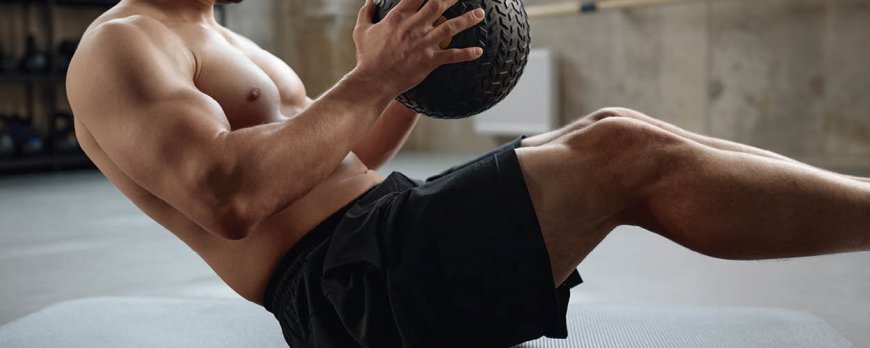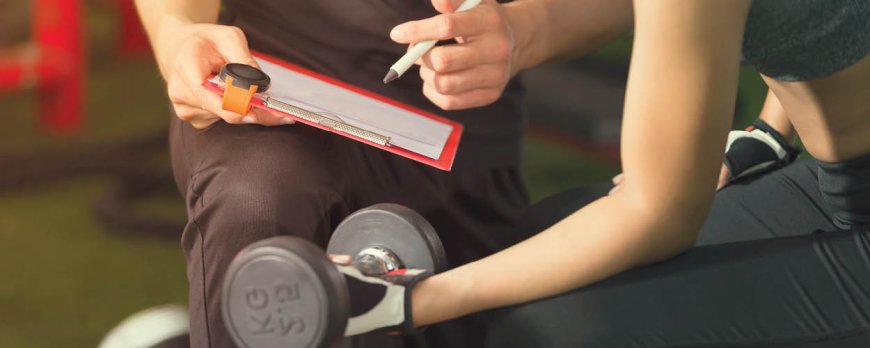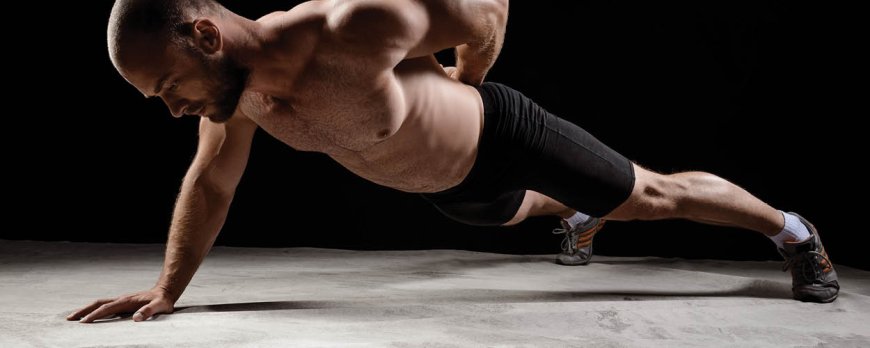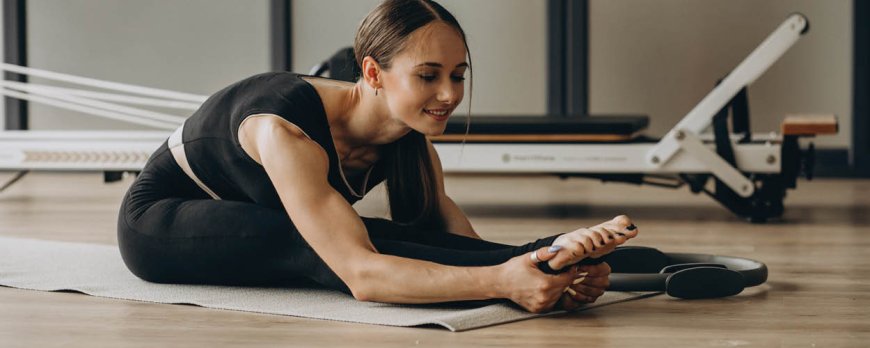How do I start working out to lose weight?
Unlock the secrets of fitness with our guide on 'How do I start working out to lose weight?' Discover practical steps toward your weight loss journey today!

How do I start working out to lose weight?
If you're looking to shed some pounds through exercise, it's important to start with a well-rounded fitness routine. Engaging in physical activities that help burn calories is key to achieving weight loss goals. Here are some beginner-friendly exercises to consider:
1. Walking: A convenient and low-impact exercise that can burn approximately 175 calories in 30 minutes.
2. Jogging or Running: An effective calorie-burning exercise, with a 30-minute jog or run burning around 288-360 calories.
3. Cycling: Helps with weight loss while improving fitness and reducing the risk of chronic diseases. A 30-minute cycling session can burn around 252-288 calories.
4. Weight Training: Builds strength, promotes muscle growth, and increases the resting metabolic rate. It can burn approximately 108 calories in 30 minutes.
5. Interval Training (HIIT): Alternates short bursts of intense exercise with recovery periods, burning more calories in less time compared to other types of exercises.
6. Swimming: A fun and low-impact exercise that can burn around 216 calories per half-hour.
7. Yoga and Pilates: While not high-calorie burners, they contribute to weight loss by increasing muscle mass, toning the body, and promoting overall well-being.
8. Non-Exercise Activity Thermogenesis (NEAT): Activities like fidgeting, cleaning, walking, and taking the stairs can boost calorie expenditure throughout the day.
Key Takeaways:
- Starting a well-rounded fitness routine is essential for weight loss through exercise.
- Beginner-friendly exercises include walking, jogging or running, cycling, weight training, interval training (HIIT), swimming, yoga, and Pilates.
- Non-exercise activity thermogenesis (NEAT) plays a significant role in weight loss and includes activities like fidgeting and taking the stairs.
- Incorporating a combination of aerobic activity, strength training, and NEAT can lead to successful weight loss.

Benefits of Exercise for Weight Loss
Regular exercise offers numerous benefits when it comes to shedding excess weight. Not only does it help burn calories, but it also improves overall fitness and contributes to a healthy lifestyle. By incorporating different types of exercises into your routine, you can maximize your weight loss efforts and achieve your fitness goals. Here are some key benefits of exercise for weight loss:
- Aerobic Exercise: Activities like walking, jogging, running, and cycling are excellent for burning calories and promoting weight loss. These exercises elevate your heart rate and increase oxygen consumption, resulting in a higher calorie burn.
- Strength Training: Weightlifting and resistance exercises build muscle, which is more metabolically active than fat. By increasing your muscle mass, you can boost your resting metabolic rate and burn more calories even at rest.
- High-Intensity Interval Training (HIIT): This form of exercise involves short bursts of intense activity followed by periods of rest. HIIT workouts are highly effective for calorie burning and can be completed in a shorter amount of time compared to traditional cardio exercises.
- Swimming: Swimming is a low-impact exercise that engages multiple muscle groups. It is an excellent option for individuals with joint issues or those looking for a refreshing workout. Swimming can burn a significant amount of calories while providing a full-body workout.
- Yoga and Pilates: While yoga and Pilates may not have the same calorie-burning potential as aerobic exercises, they are beneficial for weight loss in other ways. These exercises improve flexibility, increase muscle tone, and promote relaxation, all of which contribute to overall well-being.
- Non-Exercise Activity Thermogenesis (NEAT): Incorporating non-exercise activity throughout the day is important for weight loss. Simple activities like cleaning, taking the stairs instead of the elevator, and walking instead of driving can increase your calorie expenditure and help create a calorie deficit.
By combining different types of exercises and incorporating NEAT into your daily routine, you can create a balanced and effective workout plan for weight loss. Remember, consistency is key, so aim for regular physical activity to maximize your results. Always consult with a healthcare professional before starting any new exercise program, especially if you have any underlying medical conditions.

Choosing the Right Exercises for Weight Loss
When starting your weight loss journey, it's essential to choose exercises that target calorie burning and boost your metabolism. Here are some exercises that can help you lose weight effectively:
- Walking: Walking is a simple and accessible exercise for beginners. It is convenient, easy, and puts minimal stress on the joints. A 30-minute walk at a moderate pace can burn around 175 calories.
- Jogging/Running: Jogging or running is a higher intensity exercise that can burn more calories compared to walking. A 30-minute jog or run can burn approximately 288-360 calories.
- Cycling: Cycling is not only a great exercise for weight loss but also improves overall fitness and reduces the risk of chronic diseases. A 30-minute cycling session can burn around 252-288 calories.
- Weight Training: Weight training is beneficial for weight loss as it helps build strength, promote muscle growth, and increase the resting metabolic rate. It can burn approximately 108 calories in 30 minutes.
High-Intensity Interval Training (HIIT)
Interval training, or high-intensity interval training (HIIT), is a time-efficient exercise that alternates short bursts of intense exercise with recovery periods. It can burn more calories in less time compared to other types of exercises.
- Swimming: Swimming is a fun and low-impact exercise that can burn around 216 calories per half-hour.
- Yoga and Pilates: Although not high-calorie burners, yoga and Pilates can contribute to weight loss by increasing muscle mass, toning the body, and promoting overall well-being.
In addition to structured exercises, non-exercise activity thermogenesis (NEAT) plays a significant role in weight loss. Activities like fidgeting, cleaning, walking, and taking the stairs can boost calorie expenditure throughout the day. Ultimately, incorporating a combination of aerobic activity, strength training, and NEAT into one's routine can lead to successful weight loss.
Aerobic Exercises for Weight Loss
Aerobic exercises are excellent for kick-starting weight loss and improving cardiovascular health. These exercises get your heart rate up and help you burn calories, making them an effective choice for those looking to shed excess weight. Here are some aerobic exercises that can help you on your weight loss journey:
1. Walking
Walking is a simple and accessible exercise for beginners. It requires no special equipment and can be done anywhere. A 30-minute walk at a moderate pace can burn around 175 calories, making it an effective way to incorporate physical activity into your daily routine.
2. Jogging or Running
Jogging or running is another great aerobic exercise for weight loss. It helps burn calories and improve cardiovascular endurance. A 30-minute jog or run can burn approximately 288-360 calories, depending on your pace and intensity.
3. Cycling
Cycling is a low-impact exercise that not only aids in weight loss but also improves overall fitness and reduces the risk of chronic diseases. Whether you prefer outdoor cycling or indoor spinning classes, a 30-minute session can burn around 252-288 calories.
4. Swimming
Swimming is a fun and effective exercise for weight loss. It is a low-impact activity that works the entire body. A half-hour swimming session can burn around 216 calories, making it a great choice for those who want to avoid putting stress on their joints.
Incorporating a variety of aerobic exercises into your fitness routine can help you burn calories and achieve your weight loss goals. Remember to start slowly and gradually increase the intensity and duration of your workouts. Combine aerobic exercises with strength training, flexibility exercises like yoga or Pilates, and non-exercise activities throughout your day to maximize your weight loss efforts.

Strength Training for Weight Loss
Incorporating strength training into your workout routine can greatly enhance your weight loss journey. By engaging in weightlifting or resistance exercises, you can build muscle, increase metabolism, and burn more calories even at rest. Here are some key benefits and tips to help you get started:
- Muscle Building: Strength training exercises, such as lifting weights or using resistance bands, stimulate muscle growth. As you build lean muscle mass, your body becomes more efficient at burning calories, resulting in increased fat loss.
- Increase Metabolic Rate: Unlike cardio exercises, strength training continues to burn calories even after your workout. This is known as the afterburn effect, where your metabolism remains elevated for hours after you finish exercising.
- Variety of Exercises: There are various strength training exercises you can incorporate into your routine, such as squats, lunges, push-ups, and dumbbell curls. Mixing up your exercises and targeting different muscle groups will help you avoid a fitness plateau and keep challenging your body.
- Progressive Overload: To continue seeing progress, it's important to gradually increase the weight or resistance you're using. This principle of progressive overload ensures that your muscles are constantly challenged, leading to continuous improvement.
Remember, strength training doesn't necessarily mean you have to lift heavy weights. Beginners can start with bodyweight exercises or lighter weights and gradually work their way up. It's always essential to maintain proper form to prevent injuries and consult a fitness professional if needed.
Sample Strength Training Routine:
- Warm-up: Start with 5-10 minutes of light cardio, such as jogging or jumping jacks, to prepare your muscles for the workout.
- Squats: Perform 3 sets of 10-12 reps. Start with bodyweight squats and gradually add resistance using dumbbells or a barbell.
- Push-ups: Aim for 3 sets of 8-10 reps. Modify the exercise by performing push-ups on your knees or against a wall if needed.
- Dumbbell Lunges: Complete 3 sets of 12-15 reps per leg. Hold dumbbells in each hand and step forward into a lunge position.
- Plank: Hold the position for 30 seconds to 1 minute, aiming for 3 sets. You can start with forearm planks and progress to full planks as you build strength.
- Cool-down: Finish your workout with 5-10 minutes of stretching to improve flexibility and promote recovery.
By incorporating strength training into your workout routine, you'll not only enhance your weight loss efforts but also improve overall strength, endurance, and body composition. Remember to listen to your body, progress at your own pace, and stay consistent to achieve long-term results.

High-Intensity Interval Training (HIIT)
High-Intensity Interval Training (HIIT) can maximize your calorie burn in minimal time, making it a great choice for weight loss. HIIT involves alternating between short bursts of intense exercise and recovery periods. This type of workout keeps your heart rate elevated, boosting your metabolism and helping you burn more calories both during and after the workout.
Incorporating HIIT into your routine is simple. You can start with bodyweight exercises like squat jumps, burpees, and mountain climbers. Perform each exercise at maximum effort for 30 seconds, followed by a 30-second rest. Repeat this cycle for 15-20 minutes, gradually increasing the duration as your fitness level improves.
One of the benefits of HIIT is that it can be customized to suit your preferences and fitness level. You can choose different exercises, vary the work and rest intervals, and adjust the intensity based on your capabilities. Whether you prefer bodyweight exercises, running, cycling, or using gym equipment like the elliptical or rowing machine, HIIT can be adapted to any exercise modality.
Tips for effective HIIT workouts:
- Focus on full-body movements to engage multiple muscle groups.
- Warm up before each session and cool down afterwards to prevent injury.
- Start with shorter work and rest intervals if you're a beginner, gradually increasing the intensity and duration over time.
- Listen to your body and take breaks when needed.
- Combine HIIT with other types of exercises, such as strength training and cardio, to create a well-rounded fitness routine.
By incorporating HIIT into your workout routine, you can achieve effective weight loss results while saving time. However, it's important to remember that HIIT workouts are intense and may not be suitable for everyone. If you have any underlying health conditions or are new to exercise, consult with a healthcare professional or a certified fitness trainer to ensure you're performing HIIT safely and effectively.
Incorporating Yoga and Pilates into Your Routine
Including yoga and Pilates in your routine can complement your weight loss efforts and promote a balanced mind-body connection. These forms of exercise focus on flexibility, core strength, and relaxation, offering a holistic approach to wellness.
1. Yoga for Weight Loss
Yoga consists of various poses that engage different muscle groups, helping to tone and strengthen the body. It also improves posture, enhances flexibility, and reduces stress levels. Some yoga styles such as Vinyasa or Power Yoga incorporate dynamic movements and flowing sequences, which increase heart rate and calorie burn, making them ideal for weight loss.
2. Pilates for Weight Loss
Pilates is a low-impact exercise that targets the deep muscles of the core, improving stability, and posture. By emphasizing controlled movements and proper alignment, Pilates helps build long, lean muscle, contributing to a toned appearance. Additionally, Pilates exercises can be modified to challenge different fitness levels, making it suitable for beginners.
3. Mindful Movement and Stress Reduction
Both yoga and Pilates promote mindful movement and stress reduction, which can positively impact weight loss. By focusing on the breath and being present in the moment, these practices help reduce emotional eating triggers and promote healthier habits. The mind-body connection fostered through yoga and Pilates can also increase self-awareness, leading to improved food choices and a more balanced approach to weight management.
By incorporating yoga and Pilates into your routine, you can enhance your weight loss journey and cultivate a more harmonious relationship with your body and mind. Whether you choose to attend group classes, follow online tutorials, or practice at home, these exercises offer a versatile and accessible way to support your overall well-being while working towards your fitness goals.

The Role of Non-Exercise Activity Thermogenesis (NEAT)
Incorporating Non-Exercise Activity Thermogenesis (NEAT) into your daily life can contribute to significant calorie burning and support weight loss. NEAT refers to the energy expended through non-exercise activities, such as fidgeting, cleaning, walking, and taking the stairs. While these activities may seem insignificant, they can add up to a considerable amount of calorie expenditure throughout the day.
One way to increase NEAT is to incorporate more movement into your daily routine. Instead of sitting for long periods, try to stand up and move around every hour. Take short walks during breaks, pace while talking on the phone, or stretch and do simple exercises while watching TV. These small activities can help elevate your heart rate, increase your overall energy expenditure, and supplement your weight loss efforts.
Another effective way to boost NEAT is to prioritize active transportation. Instead of relying solely on your car, consider walking or cycling for short distances. If it's feasible, take public transportation and incorporate walking as part of your commute. Not only will this help burn extra calories, but it will also contribute to reducing carbon emissions and improving your overall well-being.
Additionally, household chores and gardening can be a great way to increase NEAT. Activities like vacuuming, mopping, gardening, and yard work involve physical movement and can help burn a significant amount of calories. Get creative and find ways to make these activities more active and engaging, such as adding squats or lunges while doing chores or using manual tools instead of powered ones.
Summary:
- Incorporating Non-Exercise Activity Thermogenesis (NEAT) into your daily life can support weight loss.
- NEAT includes activities like fidgeting, cleaning, walking, and taking the stairs.
- Stand up and move around frequently, incorporating short walks and exercises throughout the day.
- Choose active transportation options like walking or cycling for short distances.
- Engage in household chores and gardening to increase calorie expenditure.
Conclusion
Starting a workout routine to lose weight requires finding exercises that you enjoy and gradually increasing your intensity and duration. To begin, consider incorporating walking into your daily routine. It is a convenient and low-impact exercise that can burn around 175 calories in just 30 minutes. If you're looking for a more intense workout, jogging or running is an excellent option, burning approximately 288-360 calories in the same time frame.
Cycling is another great exercise for weight loss, providing a total body workout while burning around 252-288 calories in 30 minutes. If you're interested in building strength and increasing your resting metabolic rate, weight training is highly beneficial. In just half an hour, weightlifting can burn approximately 108 calories while promoting muscle growth and toning.
For those who are short on time, high-intensity interval training (HIIT) offers a time-efficient method of burning calories. By alternating short bursts of intense exercise with recovery periods, HIIT can help you burn more calories in less time compared to other exercise methods. Swimming is a fun option that also provides a low-impact workout, burning around 216 calories in 30 minutes.
Additionally, incorporating activities like yoga and Pilates into your routine can contribute to weight loss by increasing muscle mass, toning the body, and promoting overall well-being. These exercises may not burn as many calories as other forms of exercise, but they offer numerous other benefits.
Lastly, don't forget the importance of non-exercise activity thermogenesis (NEAT) in weight loss. Daily activities such as fidgeting, cleaning, and taking the stairs can significantly boost calorie expenditure throughout the day, helping you achieve your weight loss goals.
By combining aerobic exercises, strength training, and NEAT, you can create a well-rounded workout routine that supports your weight loss journey. Remember to listen to your body, start slow, and gradually increase the intensity and duration of your workouts. With consistency and determination, you can achieve successful weight loss through regular exercise.
FAQ
How do I start working out to lose weight?
It is important to engage in physical activities that help burn calories. Walking is a great exercise for beginners as it is convenient, easy, and puts minimal stress on the joints. A 30-minute walk at a moderate pace can burn around 175 calories. Jogging or running is another effective exercise for weight loss, with a 30-minute jog or run burning approximately 288-360 calories. Cycling is a popular exercise that not only helps with weight loss but also improves overall fitness and reduces the risk of chronic diseases. A 30-minute cycling session can burn around 252-288 calories. Weight training is beneficial for weight loss as it helps build strength, promote muscle growth, and increase the resting metabolic rate. It can burn approximately 108 calories in 30 minutes. Interval training, or high-intensity interval training (HIIT), is a time-efficient exercise that alternates short bursts of intense exercise with recovery periods. It can burn more calories in less time compared to other types of exercises. Swimming is a fun and low-impact exercise that can burn around 216 calories per half-hour. Yoga and Pilates, while not high-calorie burners, can still contribute to weight loss by increasing muscle mass, toning the body, and promoting overall well-being. In addition to structured exercises, non-exercise activity thermogenesis (NEAT) plays a significant role in weight loss. Activities like fidgeting, cleaning, walking, and taking the stairs can boost calorie expenditure throughout the day. Ultimately, incorporating a combination of aerobic activity, strength training, and NEAT into one's routine can lead to successful weight loss.
What are the benefits of exercise for weight loss?
Exercise plays a crucial role in weight loss by contributing to calorie burning. Regular workouts help increase energy expenditure, promote fat loss, and improve overall fitness. Additionally, exercise can boost metabolism, decrease appetite, increase muscle mass, improve cardiovascular health, and reduce the risk of chronic diseases. It also helps in maintaining weight loss over time by preventing weight regain. By engaging in physical activity, individuals can enhance their weight loss journey and achieve their desired goals.
How do I choose the right exercises for weight loss?
When selecting exercises for weight loss, it is important to consider personal preferences, fitness level, and any individual constraints or injuries. It is recommended to incorporate a combination of aerobic exercises, strength training, and non-exercise activity thermogenesis (NEAT) into one's routine. Walking, jogging, running, cycling, swimming, weight training, and high-intensity interval training (HIIT) are all effective options. Additionally, activities like yoga and Pilates can provide additional benefits such as improved flexibility and overall well-being. It is important to consult with a healthcare professional or certified trainer before starting any new exercise regimen.
How can aerobic exercises help with weight loss?
Aerobic exercises are ideal for weight loss as they help increase heart rate, burn calories, and improve cardiovascular fitness. Walking, jogging, running, cycling, and swimming are all examples of aerobic activities that can contribute to weight loss. These exercises not only burn calories during the workout but also have a positive impact on metabolism, fat burning, and overall health. Regular aerobic exercise, combined with a balanced diet, can help individuals achieve their weight loss goals.
What is the role of strength training in weight loss?
Strength training is beneficial for weight loss as it helps build muscle mass, increase metabolism, and promote fat loss. Weightlifting and resistance exercises are effective in toning the body, improving strength, and enhancing overall fitness. By creating lean muscle mass, strength training contributes to a higher resting metabolic rate, allowing individuals to burn more calories even at rest. Incorporating regular strength training sessions into a weight loss routine can result in long-term successful weight management.
What is High-Intensity Interval Training (HIIT) and how can it aid in weight loss?
High-Intensity Interval Training (HIIT) is a time-efficient exercise method that alternates short bursts of intense exercise with brief recovery periods. HIIT workouts are known for their ability to burn more calories in less time compared to traditional aerobic exercises. The intense bursts of exercise elevate heart rate and metabolism, resulting in increased calorie burning during and after the workout. HIIT can also improve cardiovascular fitness, enhance fat burning, and promote weight loss. Including HIIT workouts in a fitness routine can provide an effective and efficient way to achieve weight loss goals.
How can yoga and Pilates contribute to weight loss?
While yoga and Pilates may not be high-calorie burners, they can still have a positive impact on weight loss. These exercises help build muscle strength, increase flexibility, and improve overall well-being. By increasing muscle mass, yoga and Pilates contribute to an improved body composition, allowing individuals to burn more calories at rest. Moreover, these exercises promote mindfulness and stress reduction, which can help prevent emotional eating and support healthy lifestyle habits. Incorporating yoga and Pilates into a weight loss routine can provide physical and mental benefits.
What is the role of Non-Exercise Activity Thermogenesis (NEAT) in weight loss?
Non-Exercise Activity Thermogenesis (NEAT) refers to the calories burned through daily activities other than structured exercise. Simple activities like fidgeting, cleaning, walking, and taking the stairs can significantly contribute to calorie expenditure throughout the day. By incorporating more movement into daily life, individuals can increase NEAT and enhance weight loss efforts. NEAT plays a significant role in total energy expenditure and can help individuals achieve a calorie deficit, which is essential for weight loss.


































































































































